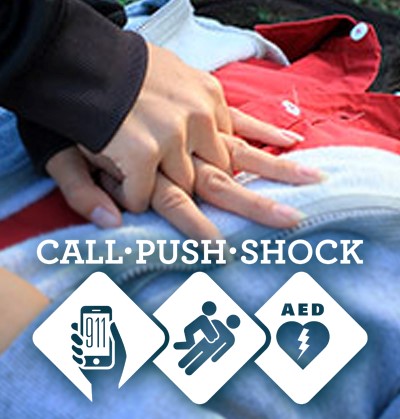
Research Highlights:
- While the overall incidence of sudden cardiac death among National Collegiate Athletic Association athletes decreased over a 20-year study period through 2022, the rates of sudden cardiac death remained highest among male athletes, Black athletes and basketball players.
- Sudden cardiac death events occurred most during athletic exertion among people with congenital abnormalities of the coronary arteries, and sudden cardiac death remains the most common cause of non-accidental death among college athletes.
- Among the athletes in this study group, there were no cases of death due to COVID-19-related myocarditis.
PHILADELPHIA, PA -- While the incidence of sudden cardiac death has decreased among National Collegiate Athletic Association (NCAA) athletes over a 20-year period, the rates remain highest in male athletes, Black athletes and basketball players, according to a preliminary study presented today at the American Heart Association’s Scientific Sessions 2023. The meeting, Nov. 11-13, in Philadelphia, is a premier global exchange of the latest scientific advancements, research and evidence-based clinical practice updates in cardiovascular science.
In a nationwide review of records examining the incidence and causes of sudden cardiac death among college student athletes competing in NCAA sports between 2002 and 2022, researchers noted an overall decrease in the incidence of sudden cardiac death but persistently high rates of sudden cardiac death for specific subgroups of athletes.
The study found:
- Among 1,102 deaths overall, sudden cardiac death was the most common medical cause of death, being cited in 143 (13%) cases.
- The incidence rate for sudden cardiac death among NCAA athletes decreased, on average, by 29% every 5 years in the 20-year study period.
- Black and white NCAA Division 1 male basketball players had the highest incidence of sudden cardiac death in the study — more than 1 in 2,000 over a 4-year career.
- Male athletes were about four times (1 in 43,348) as likely to have sudden cardiac death than female athletes (1 in 164,504).
- Black athletes were about three times as likely (1 in 26,704) as white athletes (1 in 74,581) to die from sudden cardiac death.
"The decline in overall rates of sudden cardiac death in the current study may be explained by improved survival rates from an initial sudden cardiac arrest event thanks to more widespread education on the importance of CPR training, AED availability and emergency action plans (this data was not available in the current study), or it may indicate improvements in pre-participation cardiovascular screening” said study author Bradley J. Petek, M.D., director of sports cardiology at Oregon Health & Science University in Portland, Oregon.
In this study, autopsy reports and medical histories related to 1,102 total deaths were reviewed by an expert panel to determine the causes of death and found that:
- 143 deaths (13%) were listed as sudden cardiac deaths.
- In 19.5% of the sudden cardiac deaths, there were no clear structural heart abnormalities found during an autopsy. These cases therefore may be related to primary heart rhythm abnormalities that may increase the risk of sudden cardiac death in this group.
- In the cases with enough evidence to determine the cause of sudden cardiac death: 17% were attributed to possible diseases of the heart muscle’s structure and function (idiopathic left ventricular hypertrophy/cardiomyopathy); and 13% were due to a thickened heart muscle, hampering heart function (hypertrophic cardiomyopathy), both of which may lead to abnormal heart rhythms.
- Commotio cordis — the condition that reportedly affected NFL player Damar Hamlin earlier this year — accounted for 2 deaths during the 20-year study period.
- There were no cases of death due to COVID-19-related myocarditis in the 2 ½ years of the pandemic included in the study.
“The incidence and causes of sudden cardiac death among young, competitive athletes impact prevention strategies yet remain incompletely understood,” Petek said. “We have the opportunity to greatly improve outcomes through ongoing training and education of CPR, providing better access to defibrillators, and promoting the use and adherence to emergency action plans.”
An American Heart Association volunteer expert said the findings are significant for two reasons.
“First and foremost, this study demonstrates that there has been a decrease in the incidence of sudden cardiac death in college athletes over time,” said Shelley Miyamoto, M.D., FAHA, immediate past chair of the American Heart Association’s Council on Lifelong Congenital Heart Disease and Heart Health in the Young (Young Hearts), the Jack Cooper Millisor Chair in Pediatric Heart Disease and director of the Cardiomyopathy Program at Children's Hospital Colorado in Aurora. “While this study was not designed to explain why there's been this decrease in sudden cardiac death in college athletes, it’s possible that increased awareness by colleges, universities and the NCAA and improved emergency action plans contributed to the decrease. Secondly, this study helps us recognize that there still are some disparities that need future study.”
Miyamoto said she was surprised at the number of cases in which a cause of death could not be determined. “That is particularly troublesome to everyone involved. If we can't understand the cause of the sudden cardiac death, it is going to be difficult for people to accept and understand how to prevent it in the future. Genetic testing in those individuals who suffer sudden cardiac death from an undetermined cause is something we need to pursue aggressively, “she said. “Genetic testing may potentially provide some answers for why an athlete died suddenly, and it may also provide some insight into whether other family members could be at risk.”
Study background and details:
- Four independent databases searches — the National Center for Catastrophic Sports Injury Research database, NCAA Resolutions List, Parent Heart Watch database, insurance claims and media reports — were used to identify NCAA athlete deaths nationwide from July 2002 through June 2022.
- The college athletes were age 17 and older. Of the 1,102 total deaths, 22% were among female athletes.
- Athlete deaths were categorized by cause of death including accident, cardiac, cancer, other medical issue, suicide, homicide, sickle cell trait, sports-related head injury, heat stroke or unknown.
- The sports with 5 or more sudden cardiac deaths reported throughout the study period included football, basketball, track and field, soccer, cross country, baseball and swimming.
- Basketball and football athletes had the highest incidence of sudden cardiac death (1 in 19,164 and 1 in 31,743 per year of sporting participation, respectively) among all sports reviewed.
There are several limitations to the study including the lack of a mandatory, national reporting system for sudden cardiac death, so some cases may have been missed. This study also relied on autopsy reports, which can vary in quality between institutions. There was no data on resuscitated cardiac arrests or pre-participation cardiovascular screening. In addition, rates of sudden cardiac death among non-college athletes were not available to make a comparison between athletes and non-athletes.
The American Heart Association is the worldwide leader in resuscitation science, education and training and publishes the official guidelines for CPR. The Association recently launched the Nation of Lifesavers initiative, with a goal to improve the survival rate for the more than 350,000 out-of-hospital cardiac arrests each year.
The Association has endorsed the federal Access to AEDs Act, which would create a grant program for K-12 schools to provide CPR and AED training; purchase AEDs; and create cardiac emergency response plans that establish specific steps to reduce death from cardiac arrest in school settings. In addition, the Association is a founding member along with the NFL and other major sports leagues of the Smart Heart Sports Coalition, which is advocating for states to adopt evidence-based public policies that will prevent fatal outcomes from sudden cardiac arrest among high school students.
SOURCE: American Heart Association
